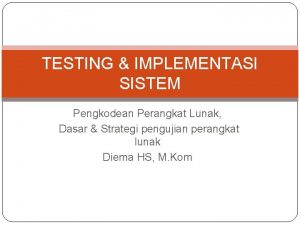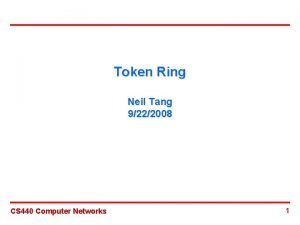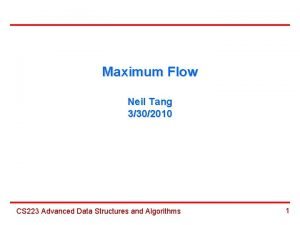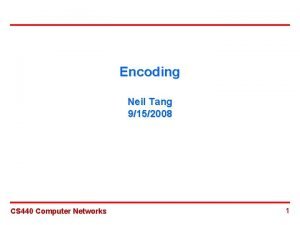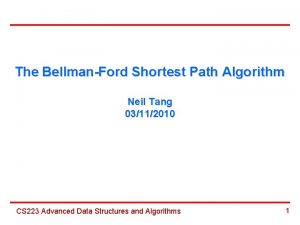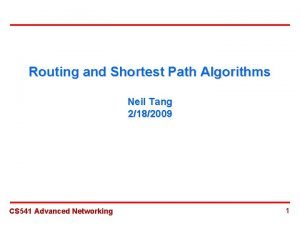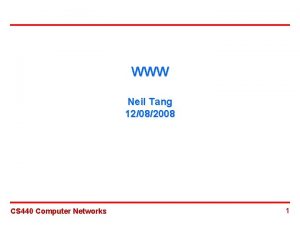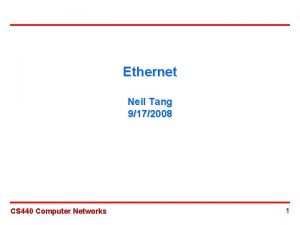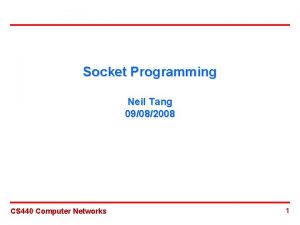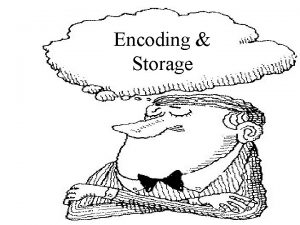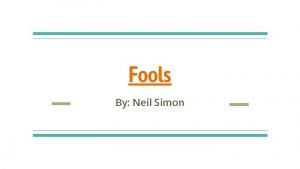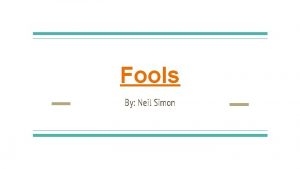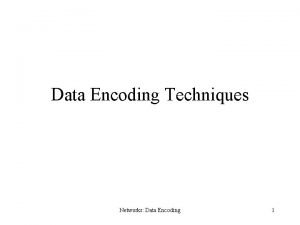Encoding Neil Tang 9152008 CS 440 Computer Networks









- Slides: 9

Encoding Neil Tang 9/15/2008 CS 440 Computer Networks 1

Outline Ø Encoding/Decoding Ø Non-Return to Zero (NRZ) Ø Non-Return to Zero Inverted (NRZI) Ø Manchester Ø 4 B/5 B CS 440 Computer Networks 2

Encoding Ø Signals: Different signals correspond to different power levels, frequencies and so on. Ø Encoding/Decoding: the procedure to transfer binary data (the signals) to the signals (binary data). CS 440 Computer Networks 3

NRZ Ø 1 → High Signal Ø 0 → Low Signal CS 440 Computer Networks 4

Problems Ø Cause: long strings of 1 s and 0 s Ø Baseline Wander: Too many consecutive 1 s or 0 s cause the average signal strength to change, making it more difficult to detect a significant change in the signal. Ø Clock Drift: A long period of time without a transition leads to clock drift. CS 440 Computer Networks 5

NRZI and Manchester NRZI: Ø 1 → a transition from the current signal Ø 0 → stay at the current signal Manchester Ø 1 → high-to-low transition Ø 0 → low-to-high transition Differential Manchester Ø 1 → the first half signal equals to the last half of the previous bit’s signal Ø 0 → the first half signal is opposite to the last half of the previous bit’s signal CS 440 Computer Networks 6

NRZI and Manchester CS 440 Computer Networks 7

Problems Ø NRZI: consecutive 0 s Ø Manchester: inefficient because link bit rate is half of the baud rate. Ø Baud Rate (symbol rate): the number of distinct symbolic changes (signaling events) per second. CS 440 Computer Networks 8

4 B/5 B Basic Idea Ø Every 4 bits of actual data are encoded in a 5 -bit code that is transmitted using NRZI. Ø No more than one leading 0 and no more than two trailing 0 s in a 5 -bit code, i. e. , no more than 3 consecutive 0 s. 4 -Bit Data Symbol 5 -Bit Code 0000 11110 0001 01001 0010 10100 0011 10101 0100 01010 … … CS 440 Computer Networks 9


